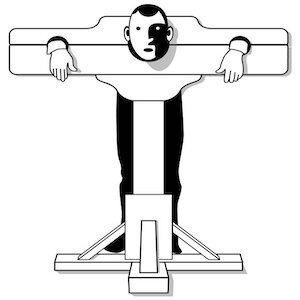By Dr. Ken Broda Bahm:

As a legal category, punitive damages are not very common in U.S. civil trials, being available and awarded in just six percent of cases. But in the broader sense of “punitive,” the motivation to punish or to correct behavior doubtlessly underlies many other categories of damages. For example, the subjectively troublesome category of “pain and suffering” can become much less controversial when it is accompanied by a motive to punish. Jurors can also know that medical expenses were likely covered by insurance, but still be willing to award them if it is something the defendant “deserves” to pay. Jurors might also know that plaintiff attorneys are apt to take a third or more of any award, but they’re still comforted in filling in that portion of the verdict form if it sends a message.
Anecdotally, the punitive amounts can be based on many factors — sometimes it is a multiple of the actual damages categories, and sometimes a figure that seems to emerge out of thin air. The factors that motivate jurors to award damages generally, and punitive damages in particular, are understudied phenomena. A recent research article (Conklin, 2020) takes a look at these motivators. In particular, the study is the first to look at two unique contributors to the willingness to award punitive damages. In this post, I will take a look at what we know generally from the research on punitive motivators, as well as what this study adds.
The Punitive Motivators in Prior Research
The Conklin article draws on previous research to create a list of the personal and situational factors that lead jurors to a desire to punish. Briefly, those factors boil down to the following:
Injury Severity: The more severe the injury or the loss, the greater the desire to hold someone responsible and to punish.
Potential Harm: Aside from the actual damage, the greater the damage that could have happened, the greater the need to try to correct that in the future.
Degree of Liability: While the law separates the categories, psychology bleeds them together, and the stronger the liability case, the greater the motive to punish.
Wealth of the Defendant: It stands to reason that defendants who are bigger and richer are going to be perceived as more appropriate targets for punitive damages.
Cost-Benefit Analysis: To the extent that the defendant can be portrayed as having consciously decided to accept a level of risk in order to keep costs down, then jurors will be motivated to use damages to change that calculation.
Higher Requests: This one is simple: “For both punitive and compensatory damages, the more the plaintiff’s attorney asks for, the more the jury awards.”
Low-Probability Events: Counter-intuitively, a rarer event can be a stronger motivator, because jurors over-estimate likelihood and apply hindsight bias in considering those events.
The Current Study: Two Additional Factors
The Conklin study focused on a scenario involving a failed recall of a faulty water heater, with the design varying whether the defendant company was located in the state or out of state, and also varying whether the punitive request was tied to objective factors. The results added these two factors to the list.
Out of State Defendants
When the damages hit an out of state defendant, the damages were 32 percent greater. As the author explained, “Jurors may view the transfer of money from an in-state corporation to an in-state plaintiff as trivial — especially in the case of punitive damages.”
Objective Requests
When the plaintiff’s damages request was tied to an objective figure — in this case, two days’ worth or profits — they ended up being 11 percent greater. This is an example of the “anchoring effect” while also showing that not all anchors are created equal. Grounding the request on a real figure is better than just tossing out a number.
So at the present stage of research, this seems to be the list. Plaintiffs who are trying to activate a punishment motivation, either for punitive damages or to support other categories, should try to play up these factors and make them more salient to the trial story. Defendants who are trying to avoid this punitive mindset, on the other hand, should try to de-emphasize these factors in the case narrative as much as they’re able to.
______
Other Posts on Damages:
- Visualize Damages
- Normalize Your Damages: Five Ways
- Remember, With Damages It’s the Message and Not Just the Math